Will the Coalition Continue?
It almost certainly will. As the Whitehall Township Tooling Coalition nears the end of the tax incentive that led to its creation, this alliance of eight tool and die shops finds so much value in the partnership that the group is on track to last. Here are lessons in how and why to enter into an alliance of shops.
Share


The first decade of the 2000s included dark years for tool and die shops. Manufacturing demand in general was weak, and the rising popularity of buying dies and molds from China made it seem as though whatever tooling work remained was destined to go overseas. The state hardest hit was Michigan (home to an entire ecosystem of tool and die shops), and this state’s legislature took notice and implemented a plan.
Now, that plan is about 10 years old. It is worth reexamining, even though business conditions are much different today, because one of the plan’s more important innovations lives on.
Here are the details: In late 2004, an existing piece of legislation called the Michigan Renaissance Zone Act was amended to enable tool and die shops of 49 employees or fewer to enter collectively into what that legislation termed “recovery zones.” These zones were virtual rather than geographic, so a group of shops did not have to be physically close in order to be recognized as a zone and begin to enjoy the benefits—which were significant. A group of companies that was declared a recovery zone obtained a decade or more of freedom from local income, real estate and property taxes, as well as from a state business tax and an education tax. To get this tax relief, however, the shops had to work together. The law’s key requirement was that shops joined in this way form a coalition that would pool marketing resources, share best practice information and cooperate to develop standardized procedures used across different shops in the group. The premise of the legislation is that collaboration would make Michigan’s tool and die shops stronger.
Did it work? Was the state’s plan successful?
Certainly the tax relief proved vital to some companies. So many tool and die shops failed in Michigan during the 2000s that undoubtedly there were some for which the tax savings made the difference between continuing and closing. But that’s not the question.
The question instead is whether the entire plan was valuable, including the premise that the shops receiving tax savings ought to be compelled to work together in certain ways. Was the state government correct in its assumptions about how machining businesses should best cooperate?
The answer at this distance would seem to be yes and no. Or, in the case of one particularly successful recovery zone group, the answer is mostly yes. The Whitehall Township Tooling Coalition is an alliance of eight western Michigan shops. I recently paid separate visits to three of the shops in this group, and the leaders of all of them resoundingly agreed: The collaboration has helped them. Forming the coalition is a step they should have taken on their own. The state legislature had the right idea!
Yet like any other good idea conceived by human beings, this one had to find its opportunity in the form of the people best suited to advance it. It also had to find its true value, because the strengths imagined from collaboration have not been the same as the strengths this idea has actually shown. The Whitehall group put together an alliance that was recognized early on as being distinctive, and this group has gone on to realize benefits from collaboration that go beyond the benefits it was expected to see.
Today, the original justification for the coalition is gone. Business is good; Michigan tool and die shops face much better prospects than they did a decade ago. The original incentive is also mostly gone. The Whitehall group was granted 12 years of tax relief that would begin phasing out in the 10th year. The phaseout is now underway, and by 2018, all of the tax relief will be in the past.
But the group will continue. That much seems all but certain. Indeed, the original incentive arguably is just gravy at this point, because this group of shops—an alliance that even includes some direct competitors—has realized so much benefit from collaboration that the case for continuing it is clear.
The lessons of the Whitehall group are instructive well beyond Michigan and well beyond the tool and die sector. Owners or general managers of the eight businesses in this group continue to meet every other month to discuss business activity and business concerns, while the companies they lead continue to feed work to one another and on some occasions have even shared employees. Could your shop realize the same benefits of collaboration that these shops enjoy? Could your shop find—or establish—a collaboration like this one? The success of the Whitehall group offers insights into why and how to put a group like this together.
How the Group Began
Scott Erdman was already in a coalition. The success that today’s Whitehall Township coalition enjoys owes a great deal to that simple fact.
Mr. Erdman’s shop, Erdman Machine, is located so close to another tool and die business in Whitehall, Michigan—Viking Tool & Engineering—that he and Viking co-owner Rick Seaver could stand outside their two buildings and see one another across the distance. The two shop leaders also have known one another since childhood. Mr. Seaver’s mother was Mr. Erdman’s Sunday school teacher. Since Erdman Machine specializes in fixtures for aerospace manufacturing and Viking Tool makes injection molds, the two businesses are similar enough to be able to help one another but different enough that they do not compete. Thus, over the years, it had become so common for these two shops to share work, information and resources that they essentially made up an informal coalition before the state of Michigan ever formally advanced the idea.
At the time of the amended Michigan Renaissance Zone Act, neither Mr. Erdman nor Mr. Seaver were any more or less aware of the actions of state government than any typical busy business owner. Viking’s founder, Warren Hutchins, learned about the act and brought it to the attention of Mr. Seaver, who reportedly said something like, “That sounds like what we’re already doing!” By that time in 2005, eight tool and die recovery zone groups had already been formed—the limit for the legislation’s first round. But an additional 12 zones would be permitted, and applications were being accepted later that year. Mr. Erdman and Mr. Seaver were determined that they would put together a group and apply.
They took the prospect of a coalition of shops very seriously. The organizers of other state-endorsed tool and die coalitions took it seriously, too—but in the cases of at least some of the other groups, it seems reasonable to assume they were more directly motivated by the tax savings than Mr. Erdman and Mr. Seaver. These two shop leaders were motivated by the hope of a coalition. They both knew how much their shops benefited from both the insight and the extra capacity that came from having a trusting relationship with a shop nearby. To them, the tax incentive was a way to get the attention of other shops they wanted to invite into this partnership. In other words, the Renaissance Zone Act offered them a way to expand upon an idea that was already serving them well.
They hand-picked the additional members. Even though companies together in a zone did not have to be geographically close, these two organizers wanted them geographically close. Regular, in-person meetings would be key to building up something like the trust and mutual understanding that made the current cooperation successful.
In addition, they both wanted shops built on something like the same mindset, history and philosophy of their own two companies. Both of these shops are long-term businesses with stable continuity of leadership, and both have a culture that emphasizes aiming to build or improve enduring relationships with current customers. The heads of companies having this same kind of outlook would be the most likely to offer the sort of candor that the success of this coalition would require.
Mr. Erdman and Mr. Seaver reached out to some shops that they knew fit this description. They also introduced themselves to some shops recommended to them by trusted sources. And they chose well. Since the group was founded, just one business has left the group while one has joined (General Die), meaning the current group of eight includes seven of the original members. Today, the Whitehall coalition consists of the following:
A.C.E. Tooling, Muskegon
Action Mold & Machining, Grand Rapids
C.S. Tool Engineering, Cedar Springs
Erdman Machine, Whitehall
General Die & Engineering, Grand Rapids
GraphiteXpress, Saranac
Northern Machine Tool, Muskegon
Viking Tool & Engineering, Whitehall
The presidents of three of these companies—Mr. Erdman, plus Donald Snow of C.S. Tool and Stephen Olsen of Northern—were the sources I went to visit to research this story.
The Michigan Economic Development Corp. oversaw the creation of these alliances. Mr. Erdman says the difference in the Whithall coalition was apparent to the MEDC from the beginning. A contact within it told him that out of all the applications received, only the Whitehall group’s application described benefits to the customer as part of the reason for why the group ought to exist. When Mr. Erdman and Mr. Seaver later wrote bylaws for the group, the MEDC adopted these rules as the model for how these coalitions ought to operate.
The two founding shop leaders had picked the other shops based on the expectation—which proved valid—that their leaders, too, would take the promise of a coalition seriously. Thus, the group set about at once to implement the collaborative measures that the Renaissance Zone Act specified. This initial effort was a good start, they say, but at best it provided only the beginning of the success the coalition would see.
The First Steps
For the alliances of shops recognized for tax relief, the state of Michigan described what collaboration should consist of. The shops in these collaborative zones should...
-
Pool sales and marketing efforts.
-
Develop standardized processes.
-
Develop tooling standards.
-
Standardize project management methods.
-
Improve the ability of niche or specialized shops in the group to compete for larger programs.
The Whitehall coalition has aimed to do all of the above. The value of these efforts has been mixed.
For example, one of the most prominent examples of point 1, sharing marketing resources, occurred when all of the Whitehall shops involved in plastics mold tooling exhibited as one in a booth at the triennial plastics show NPE. Even the members not involved in plastics (such as Northern, which makes stamping dies) contributed funds to this marketing effort for the sake of the coalition’s success. However, one of the problems the group discovered with marketing together in this way is that customers do not wish to engage the coalition as a group. They wish to deal with individual companies. Thus, while the coalition does provide a marketing advantage (more on that below), it is not an effective marketing framework. As a result, each coalition member still serves (just as it always has) as the point of contact to the customers it knows well. Though work is frequently sourced among the members of the group, this is always overseen and organized by the shop that won the business—to the extent that the customer may not know even know that a coalition is involved.
Meanwhile, there has been plenty of sharing of knowledge about processes and tooling. Erdman and Viking worked together to develop a quick-change workholding system that both shops now use routinely and some of the other shops sometimes employ. And at the bimonthly meetings, cutting tools are frequently discussed, as the executives talk freely about tool discoveries that have given their shops cycle time or tool life improvement in a particular metal. Yet the value of this kind of sharing, though real, is limited. C.S. Tool’s Mr. Snow points out the problem. In regard to shopfloor processes and tooling use (that is, in regard to points 2, 3 and 4 from the list above), he says all of the shops in the group were already fairly successful. That’s not boasting, but rather it is a reality of the fact that all of these shops had been managing to stay in business before they met one another. The decade of the ’00s had forced Michigan tool and die businesses either to find and adopt efficient processes or not be businesses anymore.
Point 5, by contrast, was easy to achieve. The clearest example of a niche or specialized shop within the Whitehall group is GraphiteXpress, a one-man shop using a robot-loaded 42,000-rpm machining center to provide quick turnaround on precise and intricate EDM electrodes. Once the coalition formed, GraphiteXpress became the obvious supplier for all of the other shops’ needs for outside electrode machining. Indeed, one of the very best benefits of coalition membership for all of the members is that they now have access to the very best network of outsource suppliers that any of them has ever known.
The Real Benefits
The Whitehall coalition presidents with whom I spoke all agreed: The value of this group has been greater than any of them expected, even though some of the true benefits have been different than what the original legislation or the shop leaders themselves anticipated. Based on the shop leaders’ descriptions of most significant benefits the coalition has provided over the years, here is something like the real list of reasons for why a small machining business would want to be part of an alliance of like-minded shops:
1. Outsourcing Network
Erdman does wire EDM, C.S. Tool has a multi-axis CNC gundrill and Northern can do Blanchard grinding. Not every shop in the group has a capability that makes it unique from all of the other shops, but every shop has areas of strength that at least make it distinctive.
Yet it is not just the combined range of capabilities that make the eight shops of the coalition into an effective outsourcing network. More significant than this is the mutual trust that has come from the regular, candid meetings among the shop’s leaders over the years. This trust makes outsourcing efficient. When one shop in the coalition calls another coalition member with a need, the person receiving this call already knows so much about the caller’s requirements that very few questions need to be asked. Indeed, for smaller jobs, often there is not even a question of markup—the easiest and most helpful response is simply to do the work for time and materials.
2. Answer for Big Customers
Customers with large orders tend to avoid small shops, fearing that the shop will be overwhelmed and won’t be able to deliver as promised. Now, thanks to the coalition, all of the members have an answer to this concern. They have a network of well-known subcontractors ready to step in with additional capacity as needed. In fact, the coalition is arguably cheaper for the customer because of this arrangement. Thanks to the alliance, all of the member shops now have access to a large supplier’s capacity, but without a large supplier’s overhead. (This was the benefit to the customer that the group described in its application to the MEDC.)
3. Machine Tool Advice and Redundancy
Shops tend to be in the dark when it comes to knowing with confidence what machine tool to buy for a particular application. C.S. Tool was about to buy a new machining center to allow toolmakers to produce simple components on the shop floor without going through the programming department, but Northern advised the shop that the machine it wanted instead was a Trak bed mill from Southwestern Industries. Similarly, Erdman was milling electrodes on a low-cost machining center, but Viking persuaded the shop instead to machine them more quickly and precisely (and with better dust control) on graphite machines from OKK. In both cases, the shop that took the advice now says that this was the right decision. And in both cases, the shop leader acknowledges he would not have come to this choice without a knowledgable ally taking a close look and offering good counsel.
And the benefit doesn’t end there. Having a range of capabilities in the group is good, but having redundant capabilities is good as well. Getting the same machine as another coalition shop provides for a readily accessible training resource. Northern’s Trak users can help if C.S. Tool has any questions about its new machine. Getting the same machine as another shop also provides a contingency. If an OKK machine should go down at either Erdman or Viking, the shop can now send the part and its program to be run on an identical machine in the other company’s shop.
4. The Little Things: Software, Trucking
When it comes to software, arguably the greater benefit to coalition members comes from the shops using different systems. A shop lacking the software to open one particular native file type can send the file to a coalition member using that software. While not a large benefit, this kind of sharing has made work easier in certain moments.
Another benefit like that relates to trucking. In one case when C.S. Tool’s customer needed its tool quickly while all of the shop’s trucks were out, C.S. Tool’s Mr. Snow called a coalition ally for help. Obtaining this, he then simply had to call his customer back to explain the curious fact that a truck from General Die would be delivering the tool instead.
Benefits such as these are small when seen individually, but they are worth noting because of what they say together about the many ways these companies can easily help one another.
5. Employee Sharing
By comparison, here is a benefit that is not small at all—it has been a crucial help. During a difficult stretch, employees of coalition shops were loaned to another member shop, essentially going to work as temps for the other company while continuing to receive a paycheck from the home shop.
The shop receiving this help was Mr. Snow’s, C.S. Tool. He remains grateful. During the post-crash period of late ’08 and early ’09, this shop (like many others) made significant personnel cuts. The staff declined 20 percent. Then, business began to quickly pick up later the same year. Fresh from the downsizing, the company was not prepared to add staff again. Who could say at that time that the increased business would be anything more than an aberration within a long and deep slump? Rather than adding staff and rather than turning business away, C.S. Tool had a third option thanks to the coalition. It met the increase in orders with the help of three employees loaned from General Die for two months, followed by two employees loaned from A.C.E. Tooling for two months after that.
6. “Soft” Business Issues
The original legislation expected that shops would share knowledge on shopfloor topics such as production processes and tooling, and the Whitehall executives discuss these topics routinely. Yet the tooling and techique of the shop floor is not an area of mystery or difficulty for them, all of whom are career manufacturing professionals. Instead, the questions for which these men have a much harder time finding the right answer relate to collections from troubled customers … or concerns with individual employees … or providing health insurance. These “soft” issues are actually hard issues, and it has been invaluable for the shop leaders to have a group of peers with whom they can discuss these challenges.
And did I mention health insurance? The coalition has had what one member described as “discussion after discussion” on this topic. The group looked into buying insurance as a single entity, but discovered it couldn’t do this. (The relevant law might have changed since then.) Instead, the insurance representatives serving various coalition shops were each invited to come present to the group, as the group searched out the idea, plan or proposal that seemed to offer the best fit or the best value.
Mr. Erdman says that in many cases involving these “soft” issues, it is not another coalition member that has the right answer, because the shop leader with the problem already has the answer.
“When you’re talking about a problem, often you are talking yourself into the solution,” he says. “You just need the right person to talk to.” This last part is key.
Northern’s Mr. Olsen sees something similar. He says the cliché saying, “It’s lonely at the top,” describes a real problem. A business leader is surrounded every day by people with whom he can’t necessarily confide his own personal ambivalence or confusion regarding important concerns affecting the business. The opportunity six times per year to have long and confidential conversations with a group of peers—a confederation of the lonely, if you will—is a real asset. This regular meeting improves the shop owner’s ability to make the right decisions about the most difficult issues that he and his business are facing.
The Whitehall Township Tooling Coalition, visit wttcmi.net.
Related Content
YCM Alliance Five-Axis VMC Enhances Machining Performance
YCM’s RX65+ VMC is engineered for speed, rigidity and accuracy in demanding applications.
Read MorePunch Custom Tooling Supports Range of Manufacturing Processes
Punch Industry designs custom tooling for injection molding, stamping and equipment manufacturing processes.
Read MorePunch Industry USA Pins, Punches Yield Precision Surface Finishes
PMTS 2025: Punch Industry USA exhibits its “polish-less” custom round and specialized shaped punches, button dies and mold pins.
Read MoreLyndex-Nikken Collets Enable Accurate Small-Diameter Cutting
The MMC Mini-Mini collet chuck is well suited for high-speed machining applications where clearance is needed, such as die mold, aerospace and medical parts.
Read More

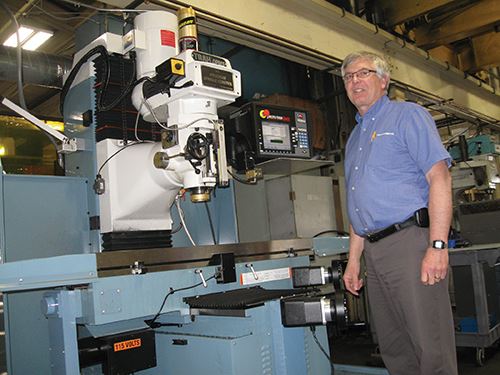
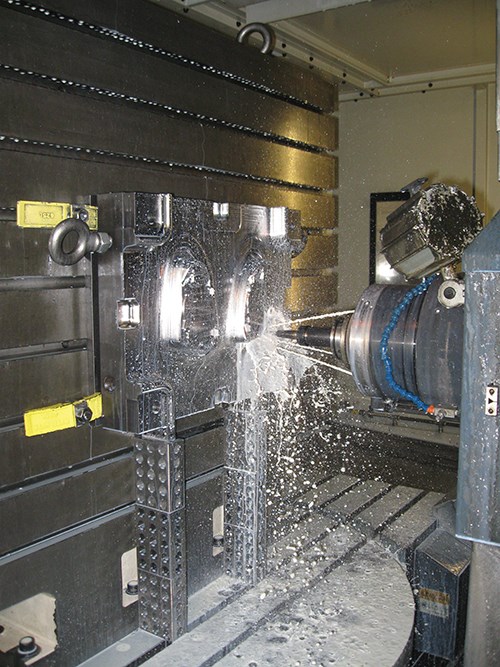

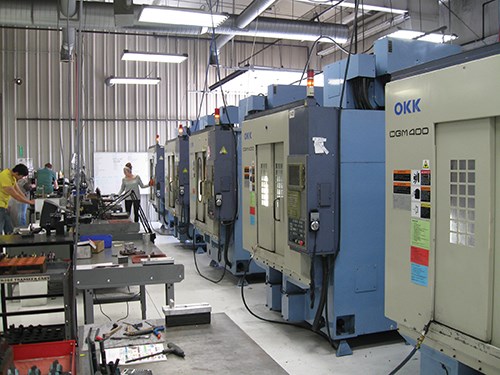
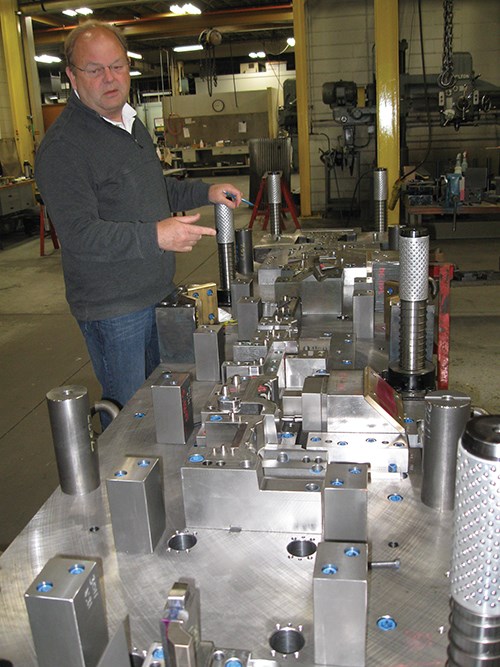

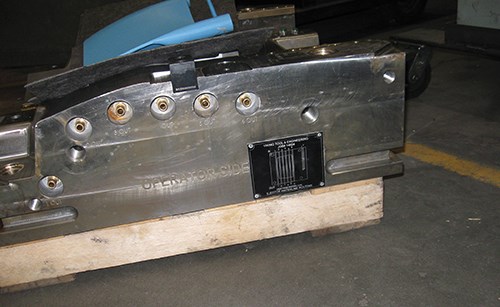


















.png;maxWidth=300;quality=90)














